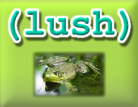 |
| HOME |
| BLOG/NEWS |
| BIO |
| PUBLICATIONS |
| arXiv Papers |
| G-Scholar Profile |
| SOFTWARE |
| CBLL |
| RESEARCH |
| TEACHING |
| WHAT's NEW |
| DjVu |
| LENET |
| MNIST OCR DATA |
| NORB DATASET |
| MUSIC |
| PHOTOS |
| HOBBIES |
| FUN STUFF |
| LINKS |
| CILVR |
| CDS |
| CS Dept |
| Courant |
| NYU |
| Websites that I maintain |
 |
 |
 |
 |
 |
 |
| OverFeat |
[ HOME PAGE ]
OverFeat is a Convolutional Network-based image features extractor and classifier. The underlying system is described in http://arxiv.org/abs/1312.6229.
OverFeat was trained on the ImageNet dataset and participated in the ImageNet 2013 competition. The package allows researchers to use OverFeat to recognize images and extract features.
| Torch |
Torch7 is a scientific computing framework with wide support for machine learning algorithms. It is easy to use and provides a very efficient implementation, thanks to an easy and fast scripting language, LuaJIT, and an underlying C implementation with CUDA and OpenBLAS and OpenMP back-ends.
Among other things, it provides: a powerful N-dimensional array, lots of routines for indexing/slicing/transposing, an amazing interface to C via LuaJIT, linear algebra routines, an object-oriented neural network library, energy-based models, numerical optimization routines....
It also provides all the power of the Lua language.
| EBLearn |
| Lush |
Lush combines three languages in one: a very simple to use, weakly-typed lisp-like interpreted language, a strongly-typed compiled language with the same syntax, and the C language, which can be freely mixed with the other languages within a single source file, and even within a single function.
 Lush has a library of over 14,000 functions and classes,
some of which are simple interfaces to popular libraries:
vector/matrix/tensor algebra, linear algebra (LAPACK, BLAS),
numerical function (GSL), 2D and 3D graphics (X, SDL, OpenGL,
OpenRM, PostScipt), image processing, computer vision (OpenCV),
machine learning (gblearn2, Torch), regular expressions,
audio processing (ALSA), and video grabbing (Video4linux).
Lush has a library of over 14,000 functions and classes,
some of which are simple interfaces to popular libraries:
vector/matrix/tensor algebra, linear algebra (LAPACK, BLAS),
numerical function (GSL), 2D and 3D graphics (X, SDL, OpenGL,
OpenRM, PostScipt), image processing, computer vision (OpenCV),
machine learning (gblearn2, Torch), regular expressions,
audio processing (ALSA), and video grabbing (Video4linux).
Lush is Free Software (GPL) and runs under GNU/Linux, Solaris, Irix, and Windows with Cygwin. Lush is included in many Linux distros including Debian, Mandrake, Quantian, and others.
| DjVuLibre |
DjVu is a document format, a set of compression methods and a software platform for distributing scanned and digitally produced documents on the Web.
DjVuLibre is an open source implementation of the DjVu system.
DjVu image files of scanned documents are typically 3-8 times smaller than PDF or TIFF-groupIV for bitonal and 5-10 times smaller than PDF or JPEG for color (at 300 DPI). DjVu versions of digitally produced documents are more compact and render much faster than the PDF or PostScript versions.
| JSSindex |
JSS is a simple search engine designed for CDROM or Web-based document collections. The documents to be indexed can be in HTML, PostScript (.ps and .ps.gz), PDF, and DjVu. The main feature of JSS is that the query engine and the index are entirely in JavaScript, and therefore require no other software than a JavaScript-enabled Web browser.
What is the advantage? If you are distributing a collection of document on CD-ROM, you can provide platform-independent full-text search without asking your users to install any software on their machine. If you publish a collection of documents on the web, you don't need to install any server-side scripts: search queries run entirely in the user's web browser.
